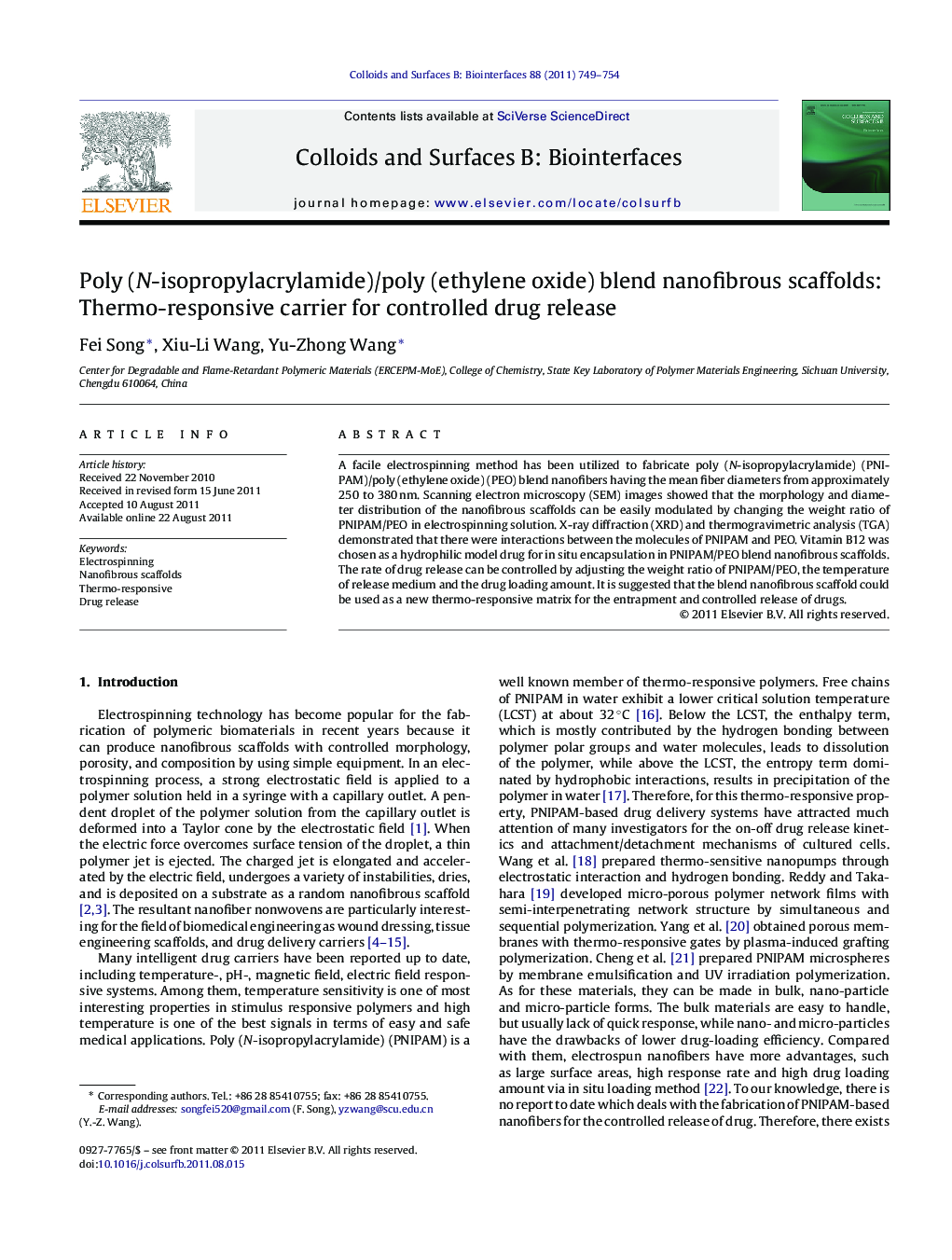| Article ID | Journal | Published Year | Pages | File Type |
|---|---|---|---|---|
| 601123 | Colloids and Surfaces B: Biointerfaces | 2011 | 6 Pages |
A facile electrospinning method has been utilized to fabricate poly (N-isopropylacrylamide) (PNIPAM)/poly (ethylene oxide) (PEO) blend nanofibers having the mean fiber diameters from approximately 250 to 380 nm. Scanning electron microscopy (SEM) images showed that the morphology and diameter distribution of the nanofibrous scaffolds can be easily modulated by changing the weight ratio of PNIPAM/PEO in electrospinning solution. X-ray diffraction (XRD) and thermogravimetric analysis (TGA) demonstrated that there were interactions between the molecules of PNIPAM and PEO. Vitamin B12 was chosen as a hydrophilic model drug for in situ encapsulation in PNIPAM/PEO blend nanofibrous scaffolds. The rate of drug release can be controlled by adjusting the weight ratio of PNIPAM/PEO, the temperature of release medium and the drug loading amount. It is suggested that the blend nanofibrous scaffold could be used as a new thermo-responsive matrix for the entrapment and controlled release of drugs.
Graphical abstractFabrication of PNIPAM/PEO nanofibrous scaffold and its in vitro thermo-responsive drug release property.Figure optionsDownload full-size imageDownload as PowerPoint slideHighlights► A new thermo-responsive nanofibrous scaffold for drug delivery. ► Adjustable diameter for PNIPAM/PEO nanofibers. ► In situ drug encapsulation and high drug loading property. ► Controlled drug release rate by chemical composition of nanofiber as well as drug loading.
